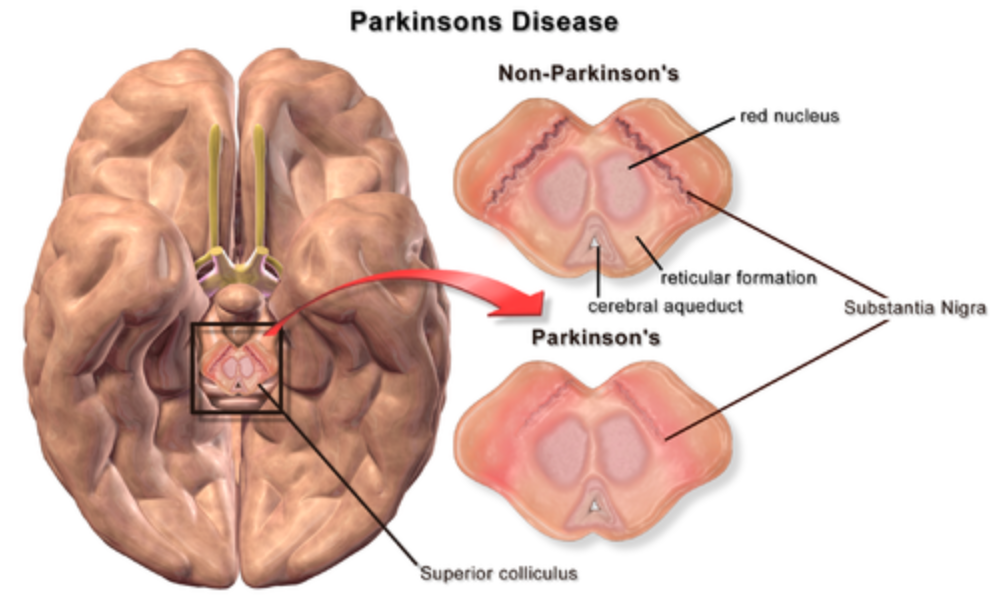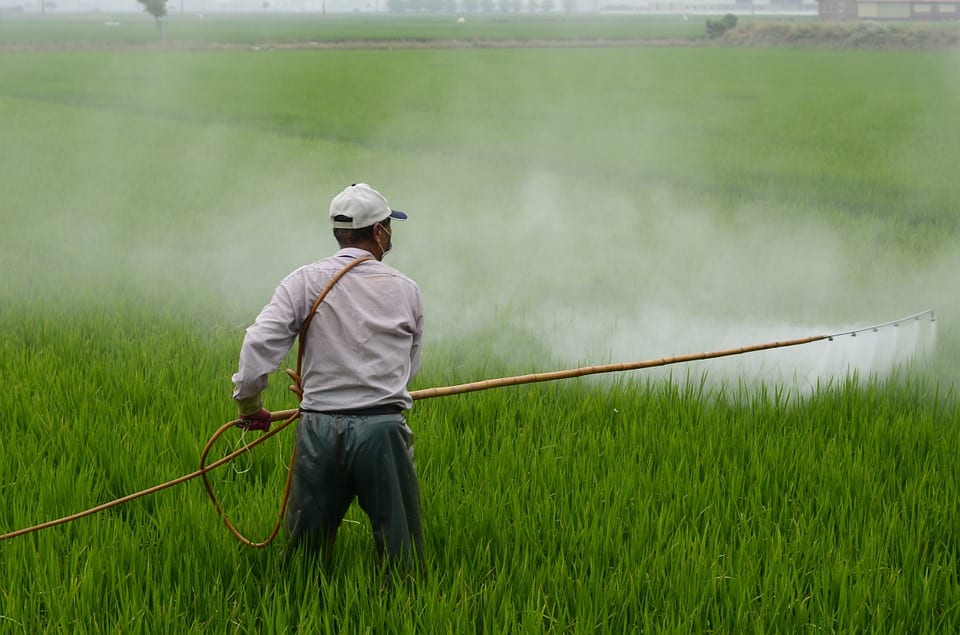The complaint alleges that Syngenta’s communications manager wrote in her notebook that the company shouldn’t phase out atrazine “until we know about” paraquat, “because of studies showing that it might be associated with Parkinson’s disease.”
A lawsuit filed in April in federal court in Missouri alleges that a Missouri woman developed Parkinson’s disease due to her exposure to the herbicide paraquat. The lawsuit names Syngenta and Chevron as defendants.
The lawsuit claims the woman was “regularly” exposed to paraquat for over 15 years by direct exposure, drinking water contamination, and by the herbicide drifting in the wind. The woman routinely handled paraquat while employed by the Monroe County Service Company, according to the complaint, and she also lived on a farm where paraquat was routinely sprayed. The complaint claims her husband applied paraquat on the farm, she would routinely accompany her husband while he sprayed paraquat, and she could feel the paraquat on her skin after it was sprayed on numerous occasions. The complaint also claims she washed her husband’s contaminated work clothes, and that the woman estimates she was exposed to paraquat over 100 times.
The lawsuit is just one of many lawsuits against Syngenta and Chevron accusing them of failing to warn about the dangers of paraquat.
Paraquat
Paraquat was first found to be an herbicide in 1955 and was first sold as an herbicide in 1962, under the name Gramoxone. It is typically sold as a liquid concentrate which is diluted with water before being loaded into a sprayer tank and sprayed on weeds. It is typically formulated with surfactants which allow it to stay in contact with weeds, penetrate weeds’ surfaces and enter into plant cells, according to the lawsuit.
The complaint claims paraquat is applied to about 15 million acres of crops per year, and is typically sprayed with a tractor-drawn pressurized tank, a truck with a pressurized tank, an aircraft, a hand-held sprayer or a knapsack sprayer.
Parkinson’s disease
Parkinson’s disease is a progressive neurodegenerative disorder of the brain which primarily affects the motor system, which controls our movements. The lawsuit claims it is “one of the fast growing neurological condition diagnoses on the planet.”

The primary motor symptoms of Parkinson’s disease are, according to the lawsuit:
- Resting tremor (shaking while muscles are relaxed)
- Bradykinesia (slow voluntary movements and reflexes)
- Rigidity (stiffness)
- Postural instability (poor balance)
These primary symptoms can cause secondary symptoms, according to the complaint, such as:
- Excess drooling and saliva
- Problems swallowing
- Poor coordination
- Muscle spasm
- Poor posture
- A quiet, monotonous, slurred voice
- A mask-like expression
- Smaller handwriting
- Freezing of walking gait
Non-motor symptoms can often present themselves years before the primary motor symptoms appear, according to the complaint. These include:
- Depression
- Sleeping problems
- Low blood pressure when you stand up
- Constipation
- Loss of or altered sense of smell
There is no cure for the disease and treatments cannot slow or stop its progression, according to the lawsuit.
The lawsuit claims that “one of the primary pathophysiological hallmarks” of the disease is the death of dopaminergic neurons in the brain. The complaint explains that these neurons produce dopamine, a neurotransmitter which is essential for the brain’s motor function control.
These neurons are not replaced and do not grow back when they die, according to the complaint, so when too many of them die, the motor symptoms of Parkinson’s disease can be the result.
The complaint claims that these neurons are “particularly susceptible to oxidative stress,” which is a poor balance between oxidants in cells and the antioxidant defenses of cells. Oxidative stress, according to the lawsuit, is a major factor in, and may be the primary cause of the death of dopaminergic neurons.
Paraquat and Parkinson’s disease
Paraquat, according to the complaint, is designed to kill plants by creating oxidative stress, but it can also injure and kill animals by creating oxidative stress as well. This oxidative stress, according to the lawsuit, is due to paraquat’s tendency to undergo redox cycling when it is around molecules of oxygen, which are plentiful in living cells. The lawsuit claims science has known that paraquat had strong redox potential in the 1930s, and that science has known paraquat can creative oxidative stress through redox cycling since the 1960s.
Paraquat’s redox cycling, according to the lawsuit, creates a reactive oxygen species known as a superoxide radical. Reactive oxygen species, according to the complaint, can damage lipids, proteins and nucleic acids, essential components of living cells. Superoxide radicals, according to the complaint, “can initiate a cascading series of chemical reactions that creates other reactive oxygen species.”
“Because the redox cycling of paraquat can repeat indefinitely in the conditions typically present in living cells, a single molecule of paraquat can trigger the production of countless molecules of destructive superoxide radical.”
The redox cycling of paraquat makes paraquat highly toxic to dopaminergic neurons, according to the complaint. The complaint implies that once paraquat gets into the brain, its redox cycling can repeat indefinitely, killing more and more dopaminergic neurons until the victim dies.
The complaint claims that the surfactants with which paraquat is typically mixed actually increase the herbicide’s ability to stay in contact with and penetrate the skin, mucous membranes and other epithelial tissues, thereby increasing its toxicity to humans.
Paraquat, according to the lawsuit, “is a strong oxidant that interferes with the function of, damages, and ultimately kills dopaminergic neurons by creating oxidative stress through redox cycling.”
The lawsuit claims scientists give animals paraquat on purpose to give them Parkinson’s disease symptoms which they can then study.
Hundreds of animal and in vitro studies have concluded that paraquat can kill dopaminergic neurons via oxidative stress, according to the lawsuit.
Paraquat is banned in numerous places worldwide, according to the lawsuit, including Switzerland, China and the European Union. Paraquat’s possible links with Parkinson’s disease were explicitly mentioned when the EU banned it.
Studies linking paraquat to Parkinson’s disease
The complaint claims that numerous epidemiological studies have linked paraquat exposure with Parkinson’s disease in people, “including multiple studies finding a two- to five-fold or greater increase in the risk of Parkinson’s disease.”
A 2019 study published by Dr. Liyan Hou, according to the complaint, found that paraquat exposure induced cell death in dopaminergic cells.
A 2011 study published by Dr. Caroline Tanner, according to the lawsuit, found that paraquat plays a role in Parkinson’s disease in humans, and that “this finding potentially has great public health significance” since it “remains one of the widely used herbicide[s] worldwide.”
A 2012 study published by Dr. Samuel Goldman, according to the complaint, found that those with the GSTT1*0 genotype who had applied paraquat had 11.1 times the normal risk of developing Parkinson’s disease. The GSTT1 gene, according to the lawsuit, encodes an enzyme which can prevent redox cycling. Those without this gene have the GSTT1*0 genotype and may be more likely to develop Parkinson’s, according to the lawsuit.
A 2002 study published by Dr. Alison McCormack, according to the complaint, found that paraquat kills dopaminergic neurons.
A 2011 study published by Dr. Robert Nisticó, according to the lawsuit, found that paraquat kills dopaminergic neurons, serotonergic neurons and noradrenergic neurons.
A 2011 study published by Dr. Phillip Rappold, according to the complaint, found that paraquat converts to PQ+, which enters dopaminergic neurons through dopamine transporters and reacts with dopamine, enhancing the oxidative stress induced by paraquat.
A 2012 study published by Dr. Pei-Chen Lee, according to the lawsuit, found an association between Parkinson’s disease and paraquat.
A 2013 study published by Dr. Gianni Pezzoli, according to the complaint, found those exposed to paraquat were more likely to develop Parkinson’s disease.
Causes of action
The lawsuit seeks to recover damages based on multiple causes of action, including:
Negligence: The complaint alleges the defendants were not reasonably careful when they failed to adequately test the safety of paraquat, and when they represented paraquat as being safe when they knew or should have known it was not safe.
Strict products liability – design defect: The complaint alleges paraquat is defective by design since, even when it is manufactured correctly, it is unreasonably dangerous when used correctly or in a reasonably foreseeable way.
Strict products liability – failure to warn: The complaint alleges the defendants knew or should have known paraquat can cause Parkinson’s disease, yet failed to warn about this risk or instruct people how to use things like masks and gloves to protect themselves from paraquat exposure.
The complaint alleges that Syngenta’s communications manager, in 2003, according to The New Yorker, wrote in her notebook that the company shouldn’t phase out atrazine “until we know about” paraquat, “because of studies showing that it might be associated with Parkinson’s disease.”


Join the conversation!